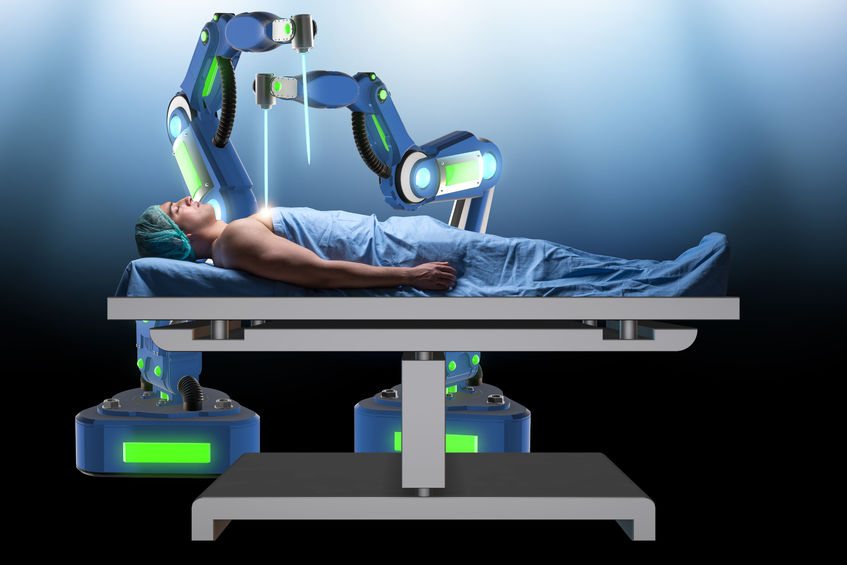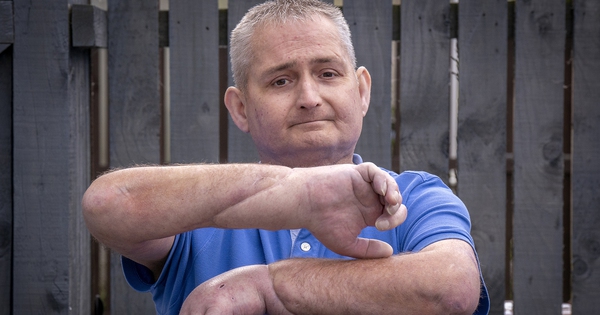Elon Musk made self-driving cars, followed by self-surgical robots to bring to Mars
As we all know, the space race is not only to satisfy the human passion for exploration. They also incubate many of the technologies that have come to life right below the ground.
If you don’t know, wireless headphones, laptops, LED lights, computer mice, phone cameras to technology for sneakers, water purifiers, air purifiers, solar cells, braces, eye surgery LASIK, insulin pumps and prosthetics… were all invented in the search for a way to send humans to space.
Now, scientists predict a very advanced technology is about to come out of it: Automated surgical robots.

Currently, we have robots that can perform many medical procedures, including pelvic surgery, spine surgery, eye surgery, submeningeal injections, etc., all of which require extreme precision.
However, current surgical robots are only semi-automatic. That is, they are designed like a machine, under the control of technicians and doctors.
Surgeons who want to operate the machines must also take a certification course, like a driver’s license. Autonomous medical robots, like self-driving cars, are still science fiction.
Need a catalyst for the field
The closest thing to a fully automated surgical robot, earlier this year, Johns Hopkins University performed the first complex soft tissue surgery with a machine called the STAR.
STAR is an intelligently programmed robot that has successfully stitched together two intestines. This is the most sophisticated procedure in abdominal surgery.
However, why don’t we include the STAR robot among the robots mentioned above. That’s because, even though STAR is fully automated, the patient it treats is just a pig.
Even so, Johns Hopkins still considers this a miracle, “A major step forward for fully automated human surgery.”. They posed a question: When will we get to that fictional future?

Johns Hopkins STAR surgical robot system.
“I think it will take a few decades, at least and a few more decades“, said Dr Tamir Wolf, CEO of Theator, a company developing automated surgical platforms with artificial intelligence.
“I think that again depends on the space race. Because that’s where automated surgery can be of value.”
One robot can replace a mid-sized general hospital
Dr Wolf said that unlike missions in Earth orbit, on the International Space Station or even on the Moon, future Mars and deep space missions will all be very long.
Assuming in the most optimal orbit like in the movie The Martian, the most powerful human spacecraft will take 260 days to reach the red planet. Add in the time spent on the mission and the time they fly back, the mission can last for years.
Such long space travel poses many medical risks to the crew. Although we can bring a doctor, a real doctor is not enough.
The Martian: Matt Damon had to operate on himself while on Mars.
If you need bowel surgery, brain surgery, heart surgery, you really need different doctors. Basically, you will have to shrink a mid-range general hospital and fit it into a spacecraft if you want to ensure the lives of the astronauts.
Or develop an automated surgical robot and load different programs into it. This second development direction is clearly more potential. A robot that does not take up much space, does not consume oxygen and does not drink water, if programmed well, will work with absolute precision.
Remember Elon Musk’s Neuralink is also developing a robotic arm for brain surgery that can sew electrodes as thin as 1/20th of a human hair into the cerebral cortex. To do that precisely, the robotic arm is programmed to suppresses both the vibrations emitted by the patient’s breathing and heart rate.
Self-driving cars, followed by self-operated robots
Elon Musk’s technology ecosystem is clearly supporting each other very smoothly. He is developing surgical robots, and has ambitions to send humans to Mars. In addition, self-driving cars.
“If you look at the development of surgical robots and compare it to what’s happening in the automotive industry, you’ll see similarities between them.”said Dr. Wolf.
We now have to drive our own cars, just like doctors have to control robotic arms by themselves. But both fields are moving towards semi-automation, meaning there are software to support partially autonomous driving.
“And then there’s the full autopilot, when the car starts to understand its environment. Then there are the highly automated technologies where the car is involved in the decision making and finally full automation.“, explains Dr. Wolf.
As for surgical robots, he thinks we’re already getting to the stage of partial automation. For example, surgical robots like Johns Hopkins University’s STAR.
“This is an early proof of concept that shows a surgical robot capable of automating its tasks“, said Dr. Wolf. “I think we’re on the right track and this must be a big leap.”
Refer Forbes
at Blogtuan.info – Source: genk.vn – Read the original article here

